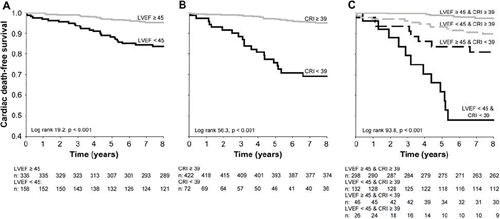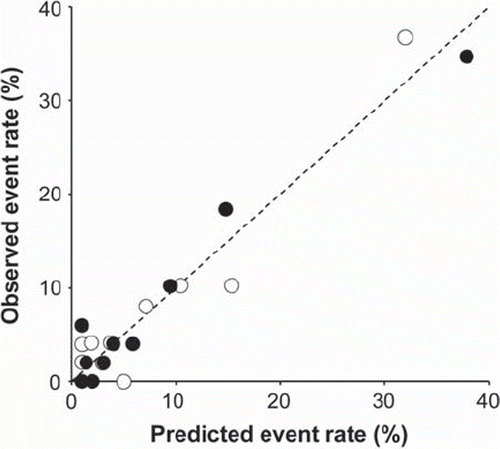Figures & data
Table I. Characteristics of the study population according to maximal chronotropic response index.
Figure 1. Left ventricular ejection fraction (LVEF) (A), maximal chronotropic response index (CRI) (B), and their combination (C) in prediction of cardiac death in Kaplan-Meier survival analysis.

Figure 2. Predicted and observed rates of cardiac mortality before (open circles) and after (solid circles) inclusion of chronotropic incompetence in the risk model for cardiac death in the patients divided into deciles according to predicted risk. Age, diabetes, New York Heart Association classification, history of myocardial infarction, left ventricular ejection fraction, and exercise capacity were included in the initial model. The calibration of the risk model is better when the data points fall closer to the 45° line.

Table II. Association of chronotropic incompetence to cardiac death and sudden cardiac death in subgroups divided according to other predictive variables.
Table III. Discrimination of the final risk model and the models where each risk marker has been removed one at a time using c-index with confidence intervals obtained from 250 bootstrap resamplings and binary R2.